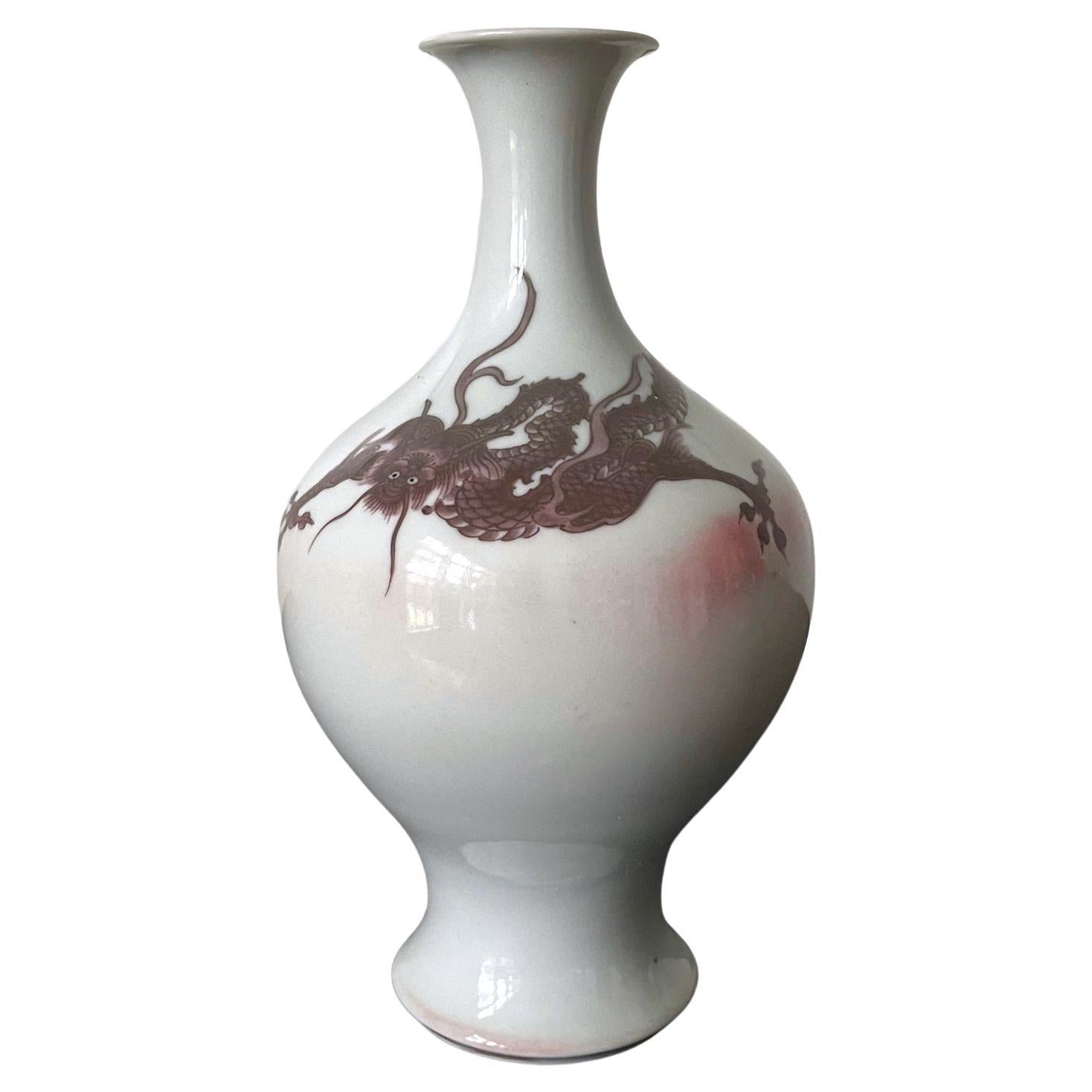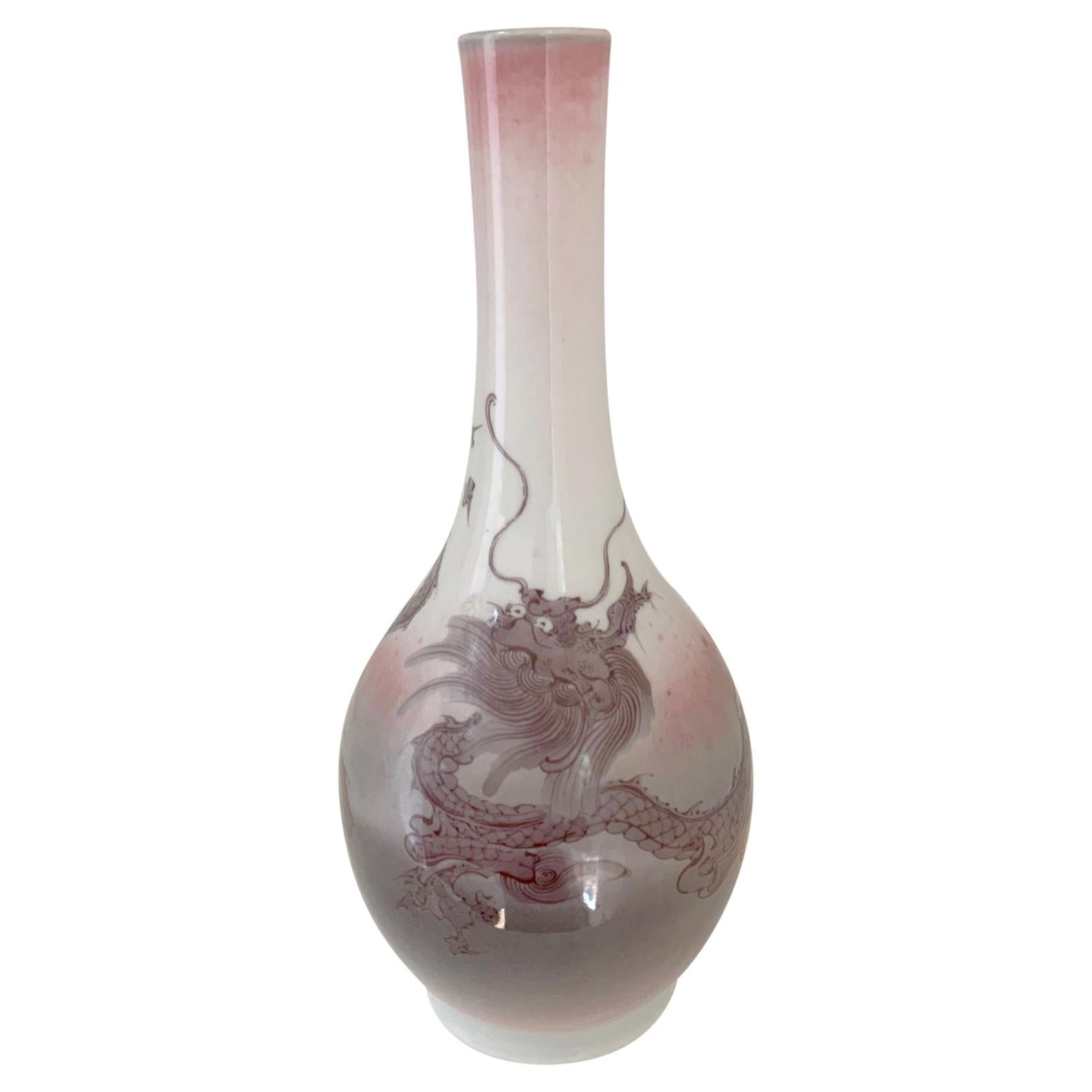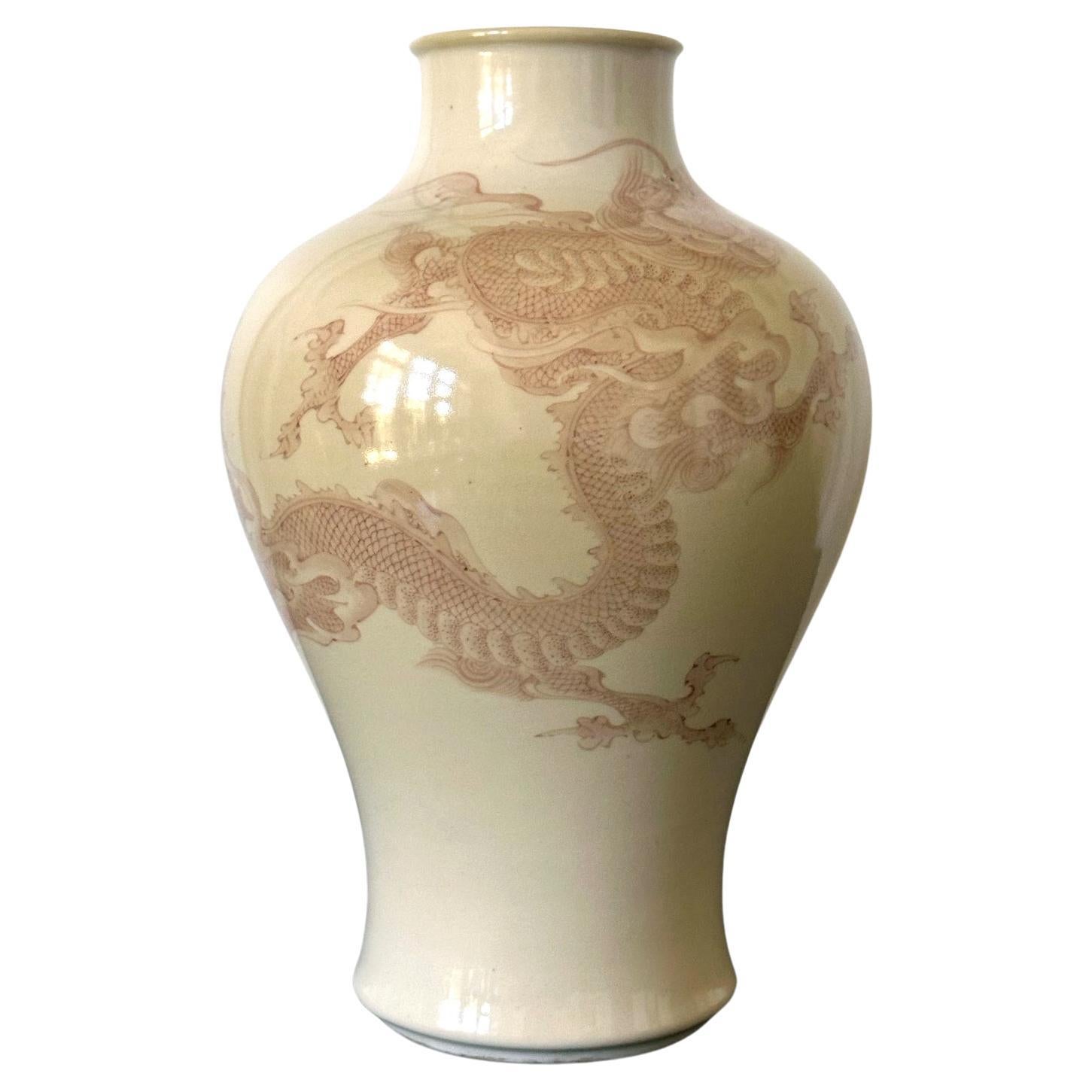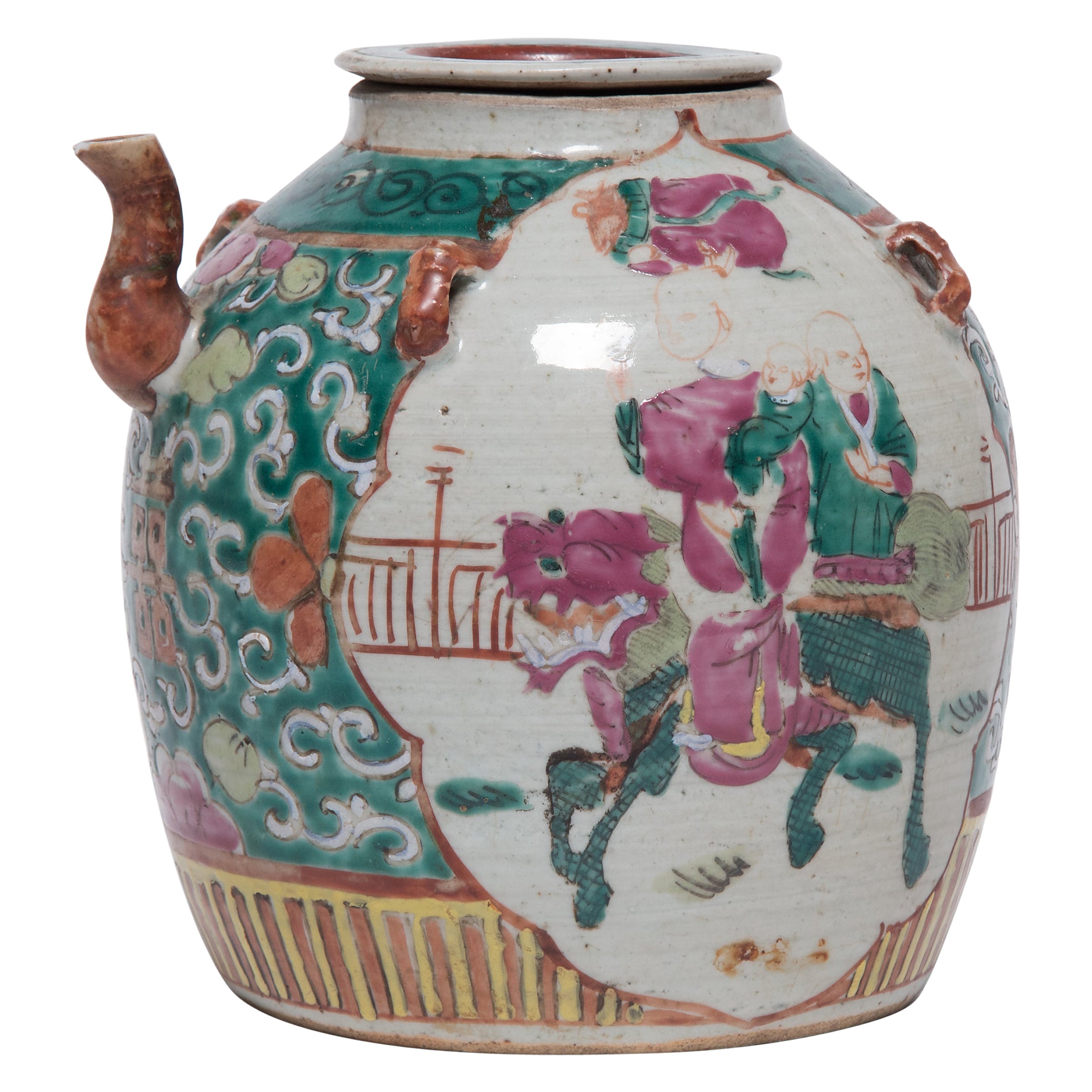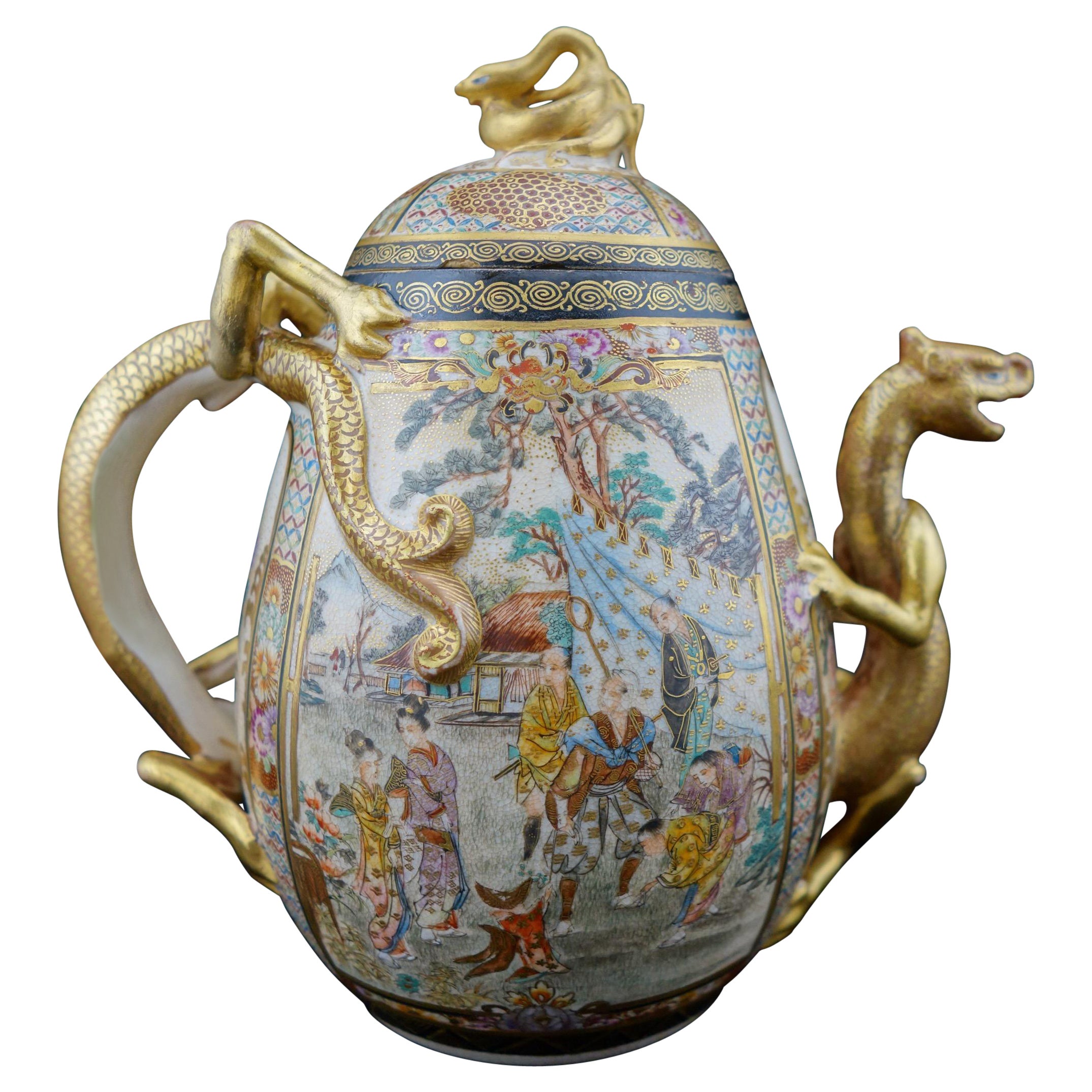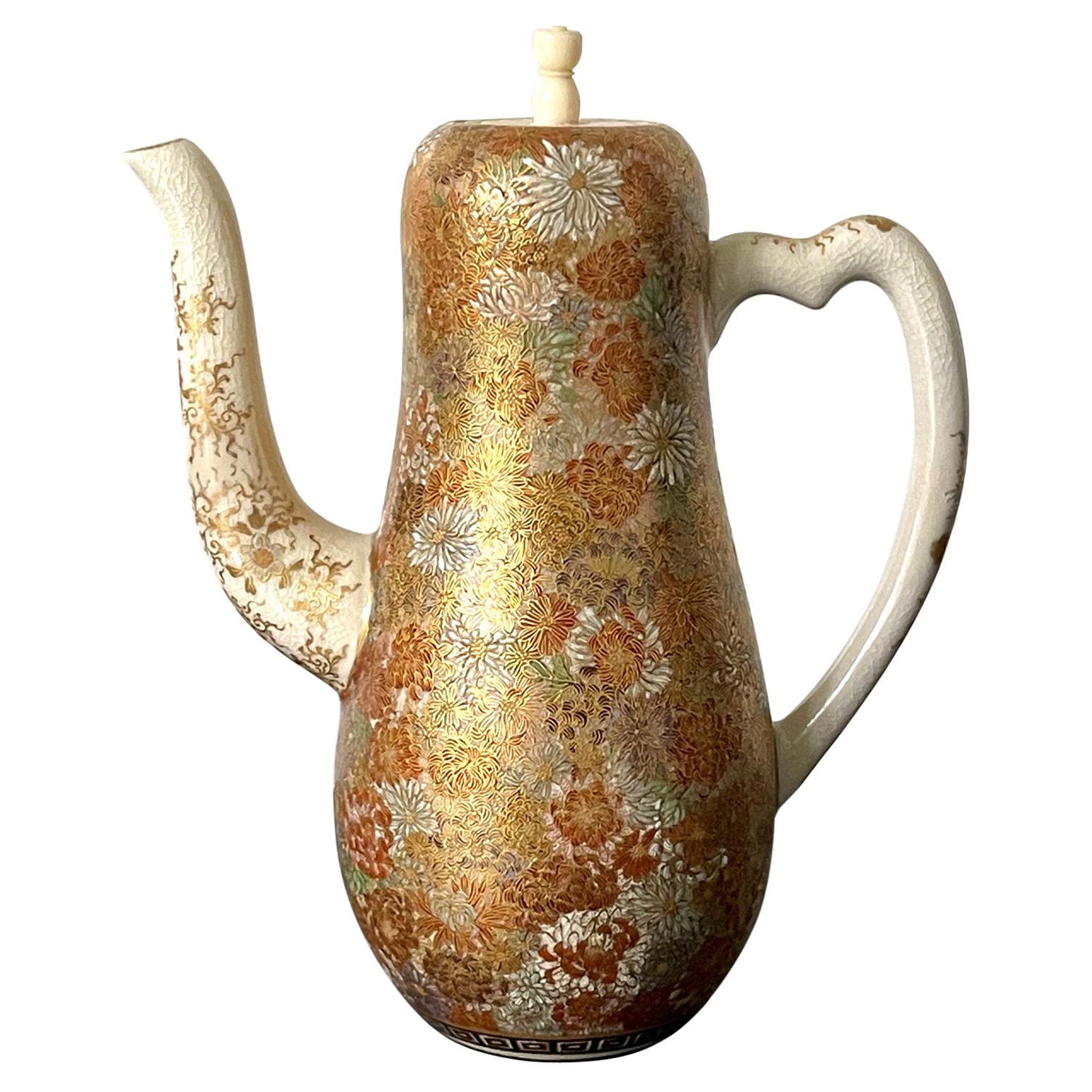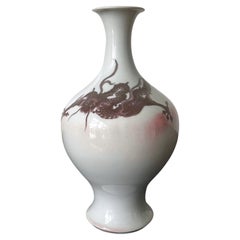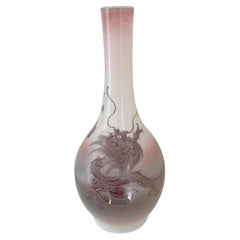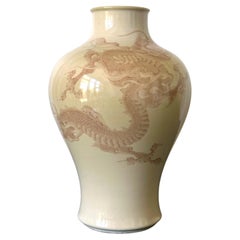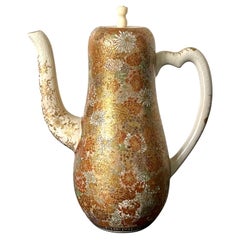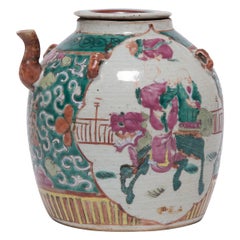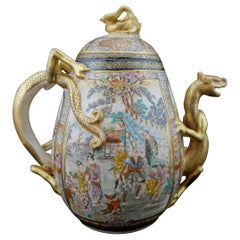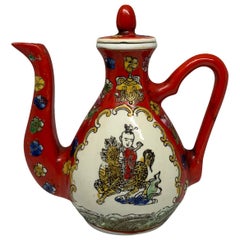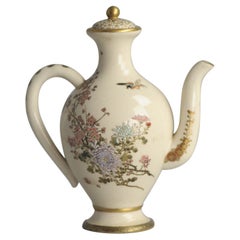Items Similar to Early Porcelain Underglaze Dragon Ewer by Makuzu Kozan Meiji Period
Want more images or videos?
Request additional images or videos from the seller
1 of 18
Early Porcelain Underglaze Dragon Ewer by Makuzu Kozan Meiji Period
$8,800
£6,728.07
€7,749.38
CA$12,331.50
A$13,766.96
CHF 7,213.68
MX$168,521.08
NOK 91,613.80
SEK 86,380.18
DKK 57,834.39
Shipping
Retrieving quote...The 1stDibs Promise:
Authenticity Guarantee,
Money-Back Guarantee,
24-Hour Cancellation
About the Item
A porcelain ewer with fine underglaze iron red, brown and blue decoration made by the legendary Japanese imperial potter Makuzu Kozan (1842-1916), this relatively rare piece is dated to circa Meiji 23rd to 26th year (1890-1893) based on the mark used on the base. This is the starting period when the artists departed from his high-relief and gold gilt period and started focusing on making porcelain pieces with underglaze paint and experimented new colors. The ewer form is also relatively rare in the artist's survived repertoire compared to other forms.
The piece takes its shape from the prototype Chinese ewer form with a long neck extending out of a bulbous body, a slender sprout with a pointy mouth and an elegant handle. The white surface was finely decorated with two copper red dragons, one slithering upward, the other downward, amidst iron-brown ribbons of clouds and above the waves. The clouds extend and wraps both the sprout and handle. The mouth is circumvented with a blue band of lotus leaf motif. The base is singed in underglaze blue seal "Great Nippon, Made by Kozan". Research indicates that this specific mark was used between Meiji 23rd to 26th.
One of the most reoccurring motifs in Kozan's work is the dragon. The mythical animal was rendered with great animation and vitality as usual. Great attention was paid to showcase the movement of the auspicious symbols and the details such as the face, eyes, claws and the scales. The imagery is created a dramatic visual effect. The craftsmanship displays great refinement from a master's hand.
- Creator:Makuzu Kozan (Artist)
- Dimensions:Height: 8.5 in (21.59 cm)Width: 7.5 in (19.05 cm)Depth: 5 in (12.7 cm)
- Style:Meiji (Of the Period)
- Materials and Techniques:Ceramic,Glazed
- Place of Origin:
- Period:
- Date of Manufacture:1890-1893
- Condition:Repaired: The base rim appears to have small spotted historical restoration under UV light. Wear consistent with age and use. Fine condition with light wear. Examined under the black light.
- Seller Location:Atlanta, GA
- Reference Number:1stDibs: LU945043310052
About the Seller
4.9
Platinum Seller
Premium sellers with a 4.7+ rating and 24-hour response times
Established in 2006
1stDibs seller since 2010
564 sales on 1stDibs
Typical response time: <1 hour
- ShippingRetrieving quote...Shipping from: Atlanta, GA
- Return Policy
Authenticity Guarantee
In the unlikely event there’s an issue with an item’s authenticity, contact us within 1 year for a full refund. DetailsMoney-Back Guarantee
If your item is not as described, is damaged in transit, or does not arrive, contact us within 7 days for a full refund. Details24-Hour Cancellation
You have a 24-hour grace period in which to reconsider your purchase, with no questions asked.Vetted Professional Sellers
Our world-class sellers must adhere to strict standards for service and quality, maintaining the integrity of our listings.Price-Match Guarantee
If you find that a seller listed the same item for a lower price elsewhere, we’ll match it.Trusted Global Delivery
Our best-in-class carrier network provides specialized shipping options worldwide, including custom delivery.More From This Seller
View AllJapanese Porcelain Glazed Vase with Dragon Design Mazuku Kozan
By Makuzu Kozan
Located in Atlanta, GA
A porcelain vase with dragon design by Japanese imperial potter Makuzu Kozan (1842-1916), circa 1900s. The vase is made in what is considered early phase of his underglaze period during late Meiji era. In a classic baluster form, the surface of the vase was decorated with a slithering dragon in underglaze iron red circulating the exterior among pink clouds. The animated rendering of the dragon is fine and detailed, with five claws, scales, long tails and highlighted eyes. The pink cloud is misty and called Morotai or the hazy style, created with a unique technique developed in Kozan's studio called fuki-e by blowing the pigment powders onto the surface. Kozan Studio experimented with newly available colors from the west starting in the 1880s, which resulted in the expansion of the palette and style that bridged the east and west aesthetic tradition. Marked in underglaze blue on the base.
Known also as Miyagawa Kozan...
Category
Antique Early 1900s Japanese Japonisme Ceramics
Materials
Porcelain
Japanese Porcelain Dragon Glazed Vase Mazuku Kozan
By Makuzu Kozan
Located in Atlanta, GA
A porcelain vase with dragon motif by Japanese imperial potter Makuzu Kozan (1842-1916), circa 1900s. The vase is made in what is considered early phase of his underglaze period during late Meiji era. In a classic elongated baluster form, the surface of the vase was decorated in an unusual pink mist on a white and aubergine background (called Morotai, the Hazy style), on which a flying dragon is showcased on the center. The dragon was outlined in iron red and filled with the aubergine color and was artistically emphasized on its bulging eyes, claws, scales and a long tail. It was the sole focus of the design circumventing the entire body of the vase. The imagery calls in mind the dragon decoration found in Korean...
Category
Antique Early 1900s Japanese Japonisme Ceramics
Materials
Porcelain
Large Japanese Porcelain Dragon Vase by Makuzu Kozan Meiji Period
By Makuzu Kozan
Located in Atlanta, GA
Made by the studio of the legendary Japanese imperial potter Makuzu Kozan (1842-1916), this is a large porcelain vase glazed in a soft yellow color with a subtle gradient, on top of ...
Category
Early 20th Century Japanese Meiji Ceramics
Materials
Ceramic
Japanese Satsuma Ceramic Ewer Yabu Meizan
By Yabu Meizan
Located in Atlanta, GA
A Satsuma ware miniature ewer from the studio of Yabu Meizan (birth name Yabu Masashichi; 1853-1934), who was one of the most celebrated and collectible Satsuma artists from the Meij...
Category
Early 20th Century Japanese Japonisme Ceramics
Materials
Ceramic
Korean Ceramic Moon Jar with Dragon Joseon Dynasty
Located in Atlanta, GA
On offer is a large Korean ceramic storage jar (hangari) with white glaze and iron red underglaze dragon design. The globular shaped jar derived its form from the Moon Jar of the ear...
Category
Antique 18th Century Korean Archaistic Ceramics
Materials
Ceramic
Japanese Glazed and Caved Ceramic Dragon Bowl by Makuzu Kozan
By Makuzu Kozan
Located in Atlanta, GA
A ceramic bowl by Japanese Imperial potter Makuzu Kozan (1842-1916) circa 1891 of late Meiji period. A very fine example of the artist's work that belongs to the middle period of his...
Category
Antique Late 19th Century Japanese Meiji Ceramics
Materials
Ceramic
You May Also Like
Chinese Enamelware Teapot with Mythical Qilin, c. 1920s
Located in Chicago, IL
Tea drinking has been an integral part of Chinese culture for centuries, resulting in a wide range of social customs and material traditions. In addition to tea leaves, water, and he...
Category
Early 20th Century Chinese Chinese Export Ceramics
Materials
Ceramic
Japanese Meiji Satsuma Finely Decorated and Gilded Dragon Handle Scenic Teapot
By Satsuma
Located in Sarasota, FL
Japanese Meiji satsuma finely decorated and gilded teapot. Some of the finest hand painted work and sculpted shape found on satsuma. Maker's mark on the bottom.
Category
Antique Late 19th Century Japanese Meiji Ceramics
Materials
Pottery
Chinese Hand Painted Small Wine Pot or Teapot
Located in Guaynabo, PR
This is a small Chinese hand painted wine pot or teapot depicting a red background with some tiny different colors flowers. In the front and back center there is a scene of a Chinese man riding a "dragon...
Category
20th Century Macanese Chinese Export Porcelain
Materials
Porcelain
Exquisite Japanese Satsuma Tea or Milk Pot Marked Base Bird Rare, 19th Century
Located in Amsterdam, Noord Holland
Epical Piece.The painting work is cool.
Additional information:
Material: Porcelain & Pottery
Region of Origin: China
Period: Meiji Period
Original/Reproduction: Original
Age: 1800-...
Category
Antique 19th Century Chinese Tea Sets
Materials
Porcelain
$711 Sale Price
20% Off
Meiji Period Porcelain Wine Ewer
Located in Chapel Hill, NC
A Japanese, Meiji period, porcelain wine ewer. Fans set off the figural reserves. This is the finest & earliest of the "new Kutani". Marked Kutani & Happiness.
9 1/2" h., 6" over ha...
Category
Antique Late 19th Century Japanese Meiji Serving Pieces
Materials
Porcelain
$540 Sale Price
55% Off
Chinese Enamelware Teapot with Twin Dragons, c. 1900
Located in Chicago, IL
Tea drinking has been an integral part of Chinese culture for centuries, resulting in a wide range of social customs and material traditions. In addition to tea leaves, water, and heat, the art of drinking tea (chayi) calls for a variety of teaware and utensils - both practical and decorative.
This rounded teapot...
Category
Early 20th Century Chinese Qing Tea Sets
Materials
Brass
$360 Sale Price
25% Off
More Ways To Browse
Red Dragon
Antique Iron Glaze
Dragon Blue And White
Lotus Ceramics
Meiji Dragon
Ceramic Dragons
Blue And Gold Dragon
Japanese Iron Meiji
Iron Dragon
Ceramic Cloud
Singer Antique Furniture
Year Of Dragon
Japanese Porcelain Animals
Gilt Ewer
Porcelain Ewer
Antique Chinese Porcelain Clouds
Chinese Lotus Blue White
Hand Painted Ewer
